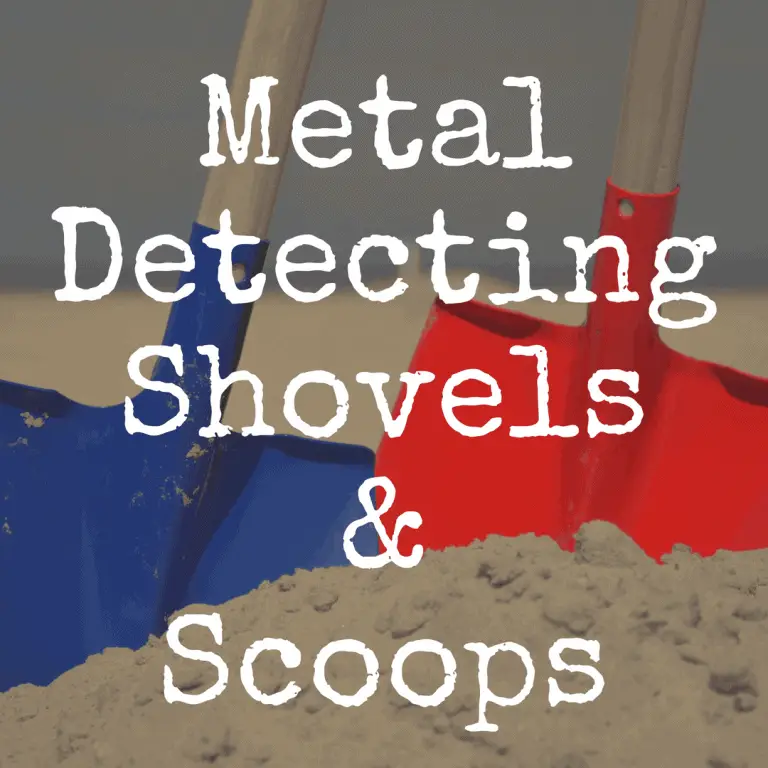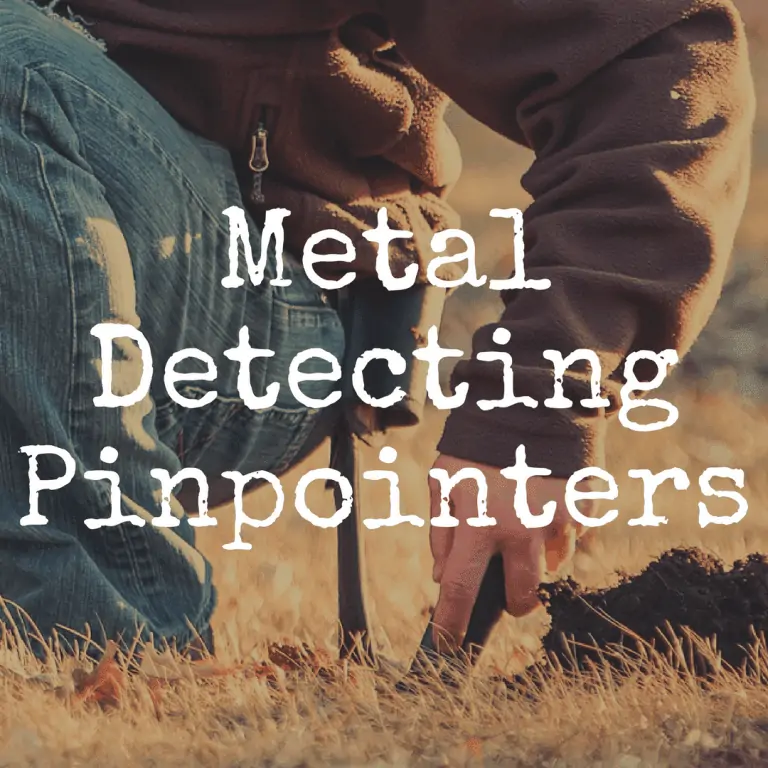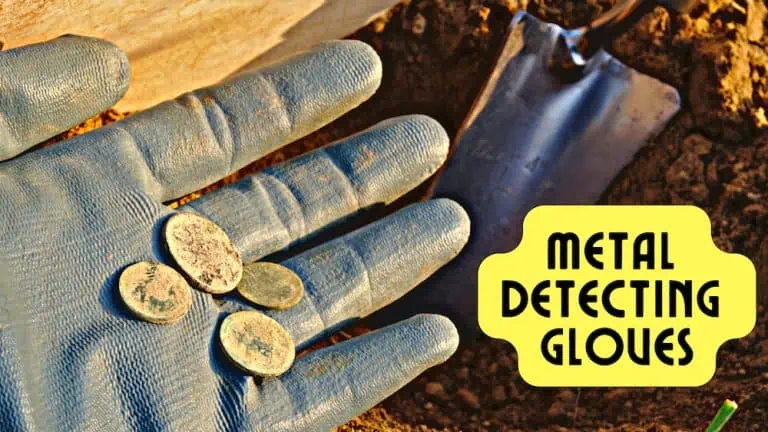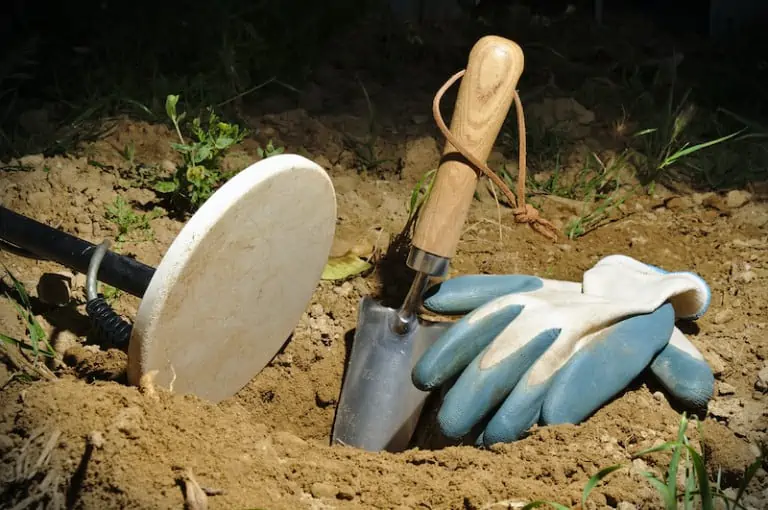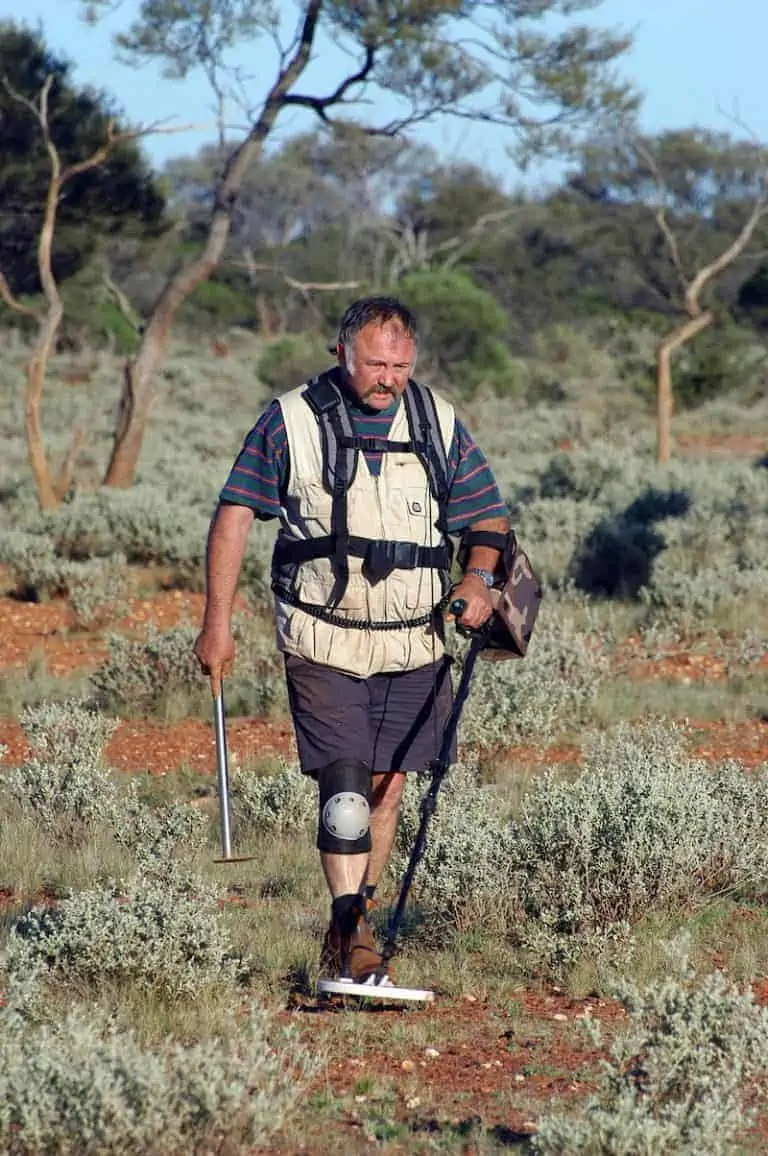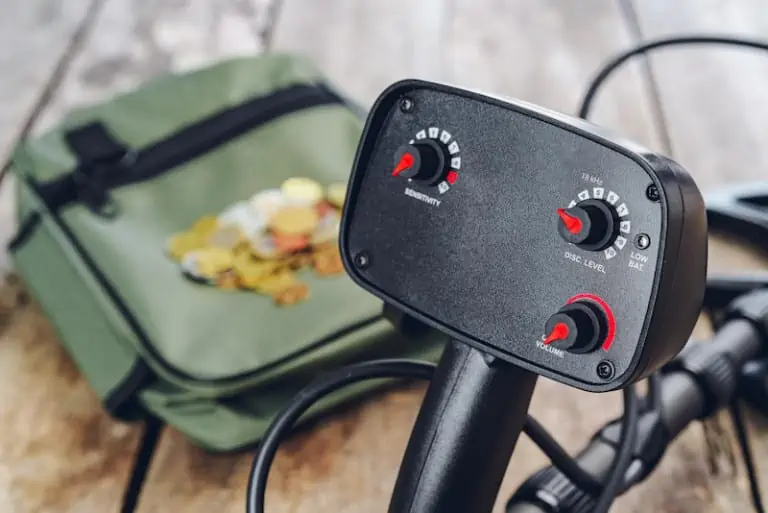30 Metal Detecting Gear List Items That Are Must Haves
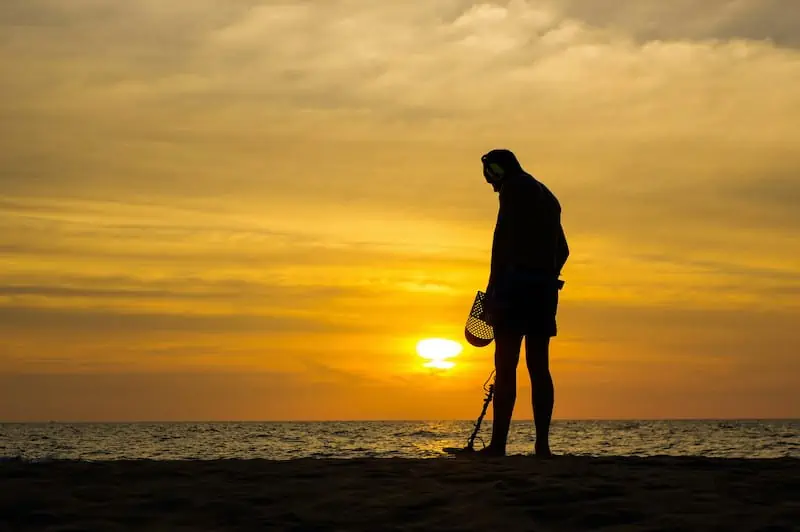
In this article, I’m going to help you figure out all of the essential metal detecting gear items to add to your list of must haves for your next treasure hunt.
So grab a cup of coffee or tea and enjoy what I believe are thirty pieces of detecting gear you should always have on hand for a major detecting treasure hunt!
1) Find Your Detector
It is important to choose the right metal detector for your search area and desired targets. The major metal detector manufacturers make specific metal detectors for specific treasures. You need to decide if you want a very low frequency (VLF) machine or a pulse induction (PI) machine.
Each has its own pros and cons, and each works best for specific treasures and soil conditions. Make sure to research what type of soil conditions your search area has and decide what type of treasure you are after. Then you can do some research and determine what type of metal detector works best for you.
Always choose a metal detector brand from a reputable manufacturer such as:
2) Extra Coils
Some metal detectors have interchangeable search coils. I would recommend bringing along a second search coil if you have one. Some areas are best searched with a concentric coil, while others are best searched with a Double-D coil.
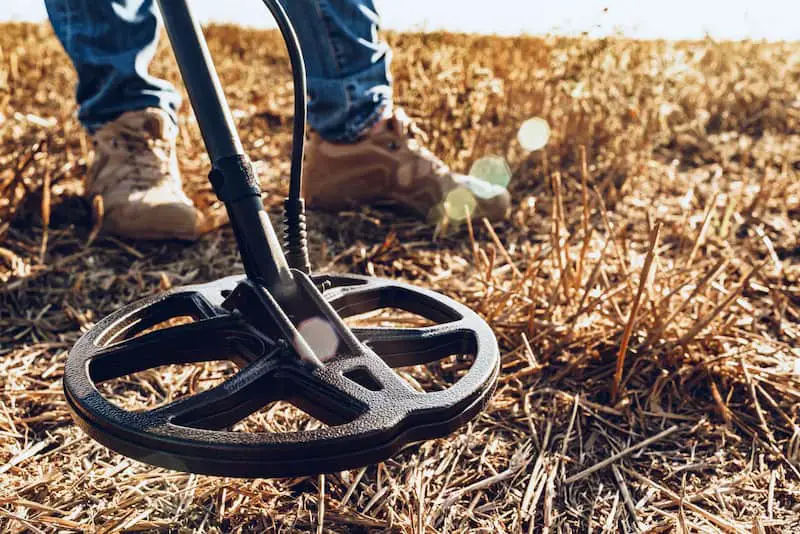
Some areas have shallow treasure while others have deep. Larger coils will cover more ground, but smaller coils will be more accurate. Each coil is built to do certain tasks and works best for those tasks. Bringing extra coils with you ensures you have all you need to find different treasure in different environments.
3) A Coil Cover
A coil cover will help protect your hardware when going through rough and uneven terrain. Your coil can be damaged while climbing over rocks or hills in search of loot. The coil also spends a lot of time resting on the ground and swinging just above or right on the ground.
If you search only in grassy areas, a coil cover may not be necessary. But more arid terrain will most certainly scuff and scrape your search coil. A coil cover will add years to functionality to your metal detector search coil by protecting it from scuffs and scrapes. It is also cheaper to buy a coil cover than a whole new search coil!
Coil covers are very thin and do not affect the depth range and sensitivity of the detector. You may even get slightly more depth because with a cover on it you can have the coil right on the ground.
4) A Good Quality Pinpointer
A metal detecting pinpointer is a great piece of gear that all detectorists should own. While many metal detectors have pinpoint modes on them, a smaller, handheld metal detector can get into smaller spaces and means you only need to dig a small hole, rather than one large enough for your metal detector’s coil to fit into.
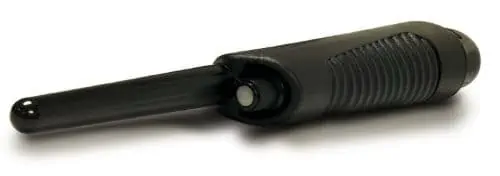
Many pinpointers are waterproof, and relatively rugged, making them great for everything from coin shooting to prospecting. When your regular metal detector gives a signal, you can pull out your pinpointer and zero in on the target.
The Garrett Pro Pointer AT is one of my favorite pinpointers. It is fully submersible and has great sensitivity.
5) A Finds Pouch
A pouch or metal detecting bag to carry your loot in is incredibly important. I like to have a smaller pouch for my good finds, and a larger bag to carry out trash in. Finds pouches keep your loot safe so you can keep searching.
They are also more convenient than using a backpack or other type of bag because they are hip mounted. This makes them accessible while digging and detecting.
Be sure if you are detecting underwater that you have a finds pouch that will allow your loot to stay inside and not float away. A mesh bag with a drawstring works well for underwater detecting. This allows the water to escape when surfacing and the finds to stay inside.
6) Delicate Finds Case
It is possible you may find a delicate relic when metal detecting. In this case, you don’t want to put the find in your regular finds pouch or other bag. You will want a small case lined with something protective to keep it safe. I like to use a small plastic container lined with rags or cotton balls.
Make sure the case isn’t too large, or that you have enough packing material in it to secure the delicate item after it is in the case. You don’t want it bouncing around in the case, so be sure to secure it with cotton, rags, or other soft items.
7) A Quality Shovel
A quality shovel is one of the most important metal detector accessories for all detectorists. If you use a poor-quality shovel, you run the risk of breaking the tool. They also typically require more energy to dig with so you will wear yourself out quicker.
My recommendation is the Lesche Sampson T-Handle Shovel. This tool is a 31” shovel made from aircraft quality steel. You can get one with a single serrated side or both serrated sides, or blades only. These help immensely when digging plugs or in hard packed soils.
8) A Quality Trowel
A good hand trowel will help when digging smaller holes and grass plugs. Many opt for a garden knife type design, with serrated edges. This help keep the amount of soil removed to a minimum and keep a grass plug neat and tidy. Some may prefer an edge digger, such as the Garrett Edge Digger.
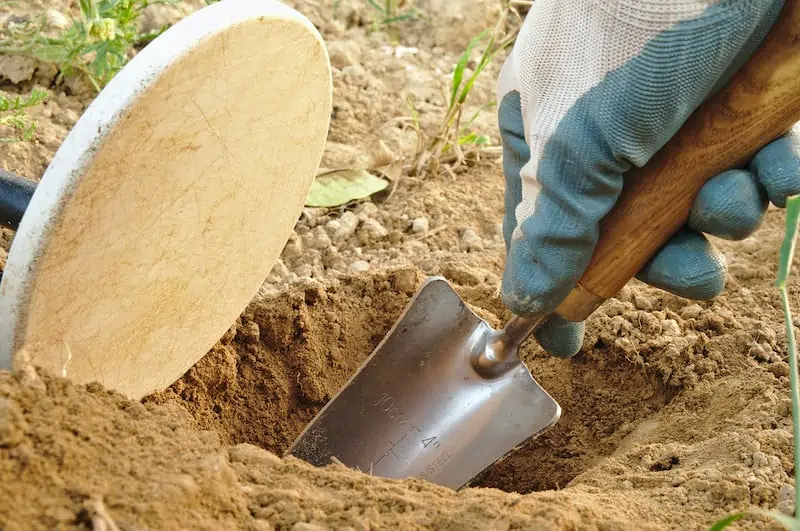
This is a quality digger made of carbon steel with cutting edge teeth. These digging trowels come with a sheath and belt mount making them easy to access while detecting.
9) A Sand Scoop
When detecting on the beach, or other sandy areas, a sand scoop will be your best friend. Have you ever tried to dig a hole in sand? It is no easy feat! A sand scoop can dig down and pull out your targets without having to dig and dig only to have the sand at the top fall into your hole.
The small holes in the side of the scoop filter out the sand while keeping your target inside. These scoops come in a variety of sizes and shapes. You can choose a short, medium, or long handle. Short and medium handled scoops are best for dry sandy areas. If you will be detecting in the surf or in the water, you will want a long-handled scoop.
10) Headphones
I always recommend a good pair of metal detecting headphones in noisy areas, if it is safe to wear them. Some areas like beaches, parks, and yards can be quite noisy and you may miss a faint signal from your detector. Wearing headphones ensures you won’t miss these faint sounds.
They also help keep the sound of your detector quiet so as not to bother bystanders. Some more high-end metal detectors have wireless technology so you can use wireless headphones with them. Don’t forget to use waterproof headphones if you are detecting underwater.
Remember not wear headphones in areas where you must keep fully aware of your surroundings. In the forest, I usually don’t wear my headphones so I can be aware of my surroundings and listen for animals.
11) Rain Covers
Many metal detectors are not waterproof. While this is typically not a problem, if inclement weather moves in, you may be in trouble.
My first metal detector was neither waterproof nor weatherproof. If it started to rain, which it typically does in the summer months in the Utah mountains, I would have to put away the detector quickly to save the control box from damage. Rain covers are meant to make the detector weatherproof, but not fully waterproof.
This way you can keep detecting in a light rain with no issues. If it begins to thunder and lightning, it is advised you stop detecting and seek shelter.
12) Harnesses
Some metal detectors are quite heavy. Most PI machines are 5 pounds plus. While this doesn’t sound like a lot, after swinging the detector for a couple of hours your arm will be worn out.
A hip mount is offered on some metal detectors to allow the control box to mount elsewhere, leaving your arm only lugging around the shaft and coil system. This greatly improves the amount of time you can detect. If your metal detector is lightweight, a harness system may be unnecessary.
13) A Carrying Case
A carrying case is recommended to keep your metal detector safe from damage. While traveling, the machine can become damaged if it is not protected.
A carrying case can alleviate this worry and may be large enough or have different compartments to hold some of your other gear, too. The case I use fits my detector, one of my kids’ detectors, my pinpointer, and a few snifters and bottles. I like an all-in-one bag, so I don’t have so many loose items around. Once we reach our hunting spot, we put the detectors together, and put any items we may need in a backpack.
14) Rechargeable Batteries
Rechargeable batteries are a great idea for metal detectors. Batteries can be expensive, and some models run on up to 8 AA batteries, or 2 to 3 9-volt batteries. This can get expensive if you constantly need to buy batteries. The areas I frequently detect in have highly mineralized soils, so my detector must work harder to eliminate the ground noise.
Because of this, my detector’s batteries do not last too long. I use rechargeable batteries to help with the cost. They are more up front, but in the long run, you get enough charges out of them to pay for themselves.
15) A Magnet
Bringing a neodymium magnet along on your hunts will help get rid of surface trash you may not be able to see. Some areas, especially in forested areas, are littered with bullet casings and other metals.
Dragging a magnet along a search area can help you find these bits of metal and remove them prior to searching the area with your detector. This will help you focus on actual targets instead of trash targets.
16) A Screwdriver
A flathead screwdriver is a great tool to pack with you when metal detecting. It can be used to pop shallow coins out of the ground without damaging them. It can also be used to probe into rock cracks if you see a piece of gold or other ore.
Using a file or grindstone to smoothly round the edges of the screwdriver will keep you from damaging coins as you probe for them. Even with rounded edges, be sure to probe gently so as not to damage any items.
17) Magnifiers
I always recommend taking along a handheld magnifying glass or a jeweler’s loupe. Often, I find myself wanting to look at a find up close. Using a magnifier will help you identify the item and see any identifying marks or patterns.
A lighted jeweler’s loupe is relatively inexpensive and comes in very handy. I bought one for my father-in-law for Christmas to add to his metal detecting gear and it cost $11 on Amazon.
18) Gold Pans
If you are searching in an area where gold has already been discovered, you may want to take along some gold pans. I always have a set with me while metal detecting because I live in the western United States where gold is quite prevalent.
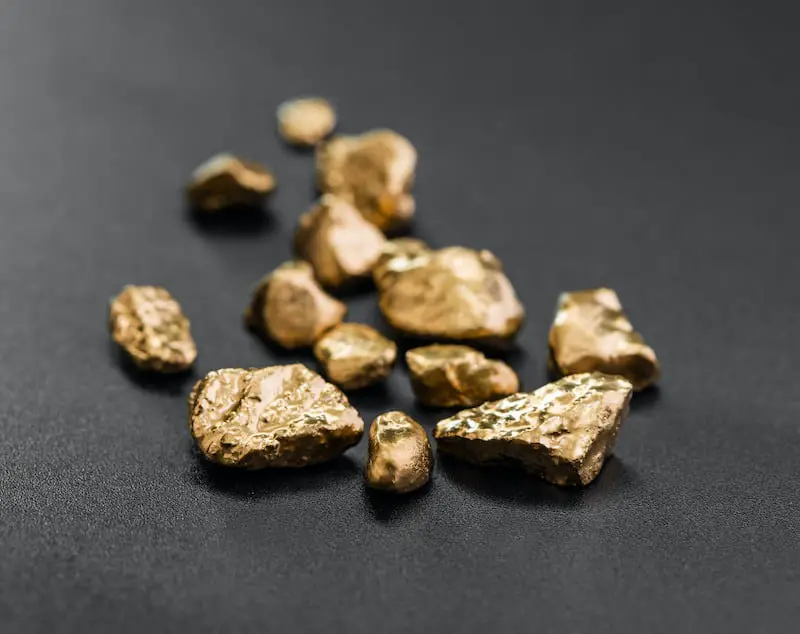
If your detector has a waterproof coil, you can search in the rivers and streams for gold signals. When you come across one, you can use your pan to sort out the rocks, sand, and gold.
19) Snifter & Bottles
If you plan to search for gold, you will want a snifter bottle. When you’ve found gold with your detector, and scooped it into your gold pan, a snifter can pull it from the pan easily.
This way you won’t lose even the smallest flakes when prospecting. I like to keep another bottle in my metal detector bag to keep any gold flakes or bits I find in after I use the snifter.
20) Gloves
Grippy gloves are an important tool for metal detectorists. They protect your hands from dirt and injury. When digging or using the pinpointer in a rocky area, you can scrape your knuckles or fingers.
Make you’re your gloves are thin, have no metal in them, and provide good range of motion for the user. Regular garden gloves are the best cheap option and tactic gloves are the best durable gloves. I like to keep a couple of pairs of gloves with me in case one set gets wet or torn.
21) Flashlight
Keeping a flashlight with you while detecting can make retrieving finds easier. When you have your hole dug, a flashlight can help illuminate the hole so you can see your finds better. It also comes in handy if you are detecting into the night, and need help seeing your way around.
A good quality flashlight is recommended. I like a small, tactical style flashlight that is waterproof. I find a flashlight can also help if you are detecting in a river or stream and the light is fading or you are in a shaded area. The light can help you find that special target sparkle under the water or on land.
22) Axe
Some areas will be full of tree roots when you start to dig.
An axe can help you cut through these roots without damaging your shovel or expending unnecessary energy. As with all your gear, you want a good quality axe.
23) GPS Navigator
When detecting in very remote area, it can be helpful and give you peace of mind to take along a GPS device. While most cell phones have GPS apps in them already, you may not have cell phone service in some of the more remote places.
With a GPS device, you can map where you’ve been, and document what you’ve found along with coordinates. If you are on to a good site, but running out of daylight, you can return to the site another day when you have plenty of time to search.
24) Paper Map (For Remote Areas)
If a GPS device is out of your price range or you don’t want to rely on a device like this, I recommend a paper map. In remote areas, a map can be a great way to keep yourself on course.
I like to plan out my search area on a map before heading into the woods. This way I know what direction I want to go and can find my way back to camp or my vehicle.
25) Water Bottle
Always remember to take along plenty of water when metal detecting. A lot of metal detecting takes place in the summer months (unless you live somewhere where the weather is pleasant all year) and you will dehydrate quickly.
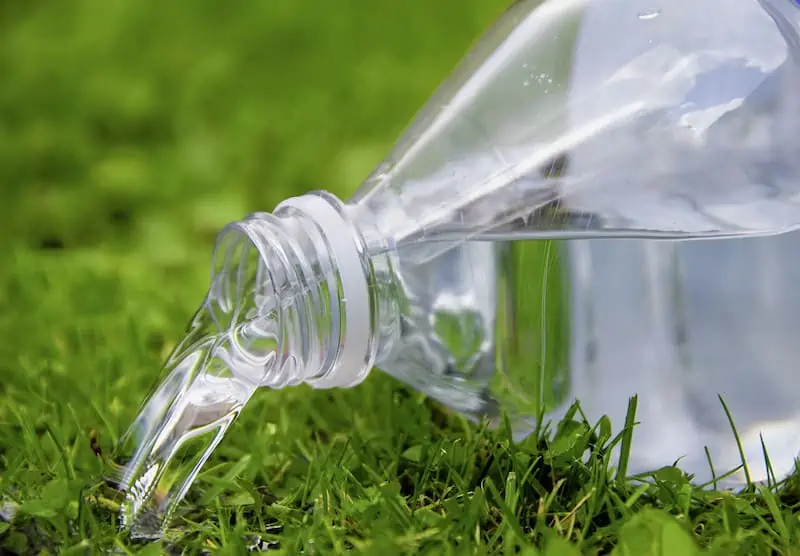
Even if it is cool, you must remember to take along and consume plenty of water. Dehydration can come on fast and it is important to keep hydrated.
26) Books
There are books about finding treasure in almost every location in the country (probably the world). Search for books or articles about finding treasure in your chosen search area to find out what types of metals and treasures are around.
For example, I have a few books on finding gold in Idaho, finding relics in Utah, and silver in Nevada. Find a book specific to your location or chosen search area and read up on the types of treasures known to exist and best places to look. These books often contain tips for finding loot, too.
27) Backpack
While you will already have your finds pouch, I still recommend a metal detecting backpack for larger items. It can be helpful to put some of your tools and bigger finds in. You can free up your hands if you keep some of your items in your backpack.
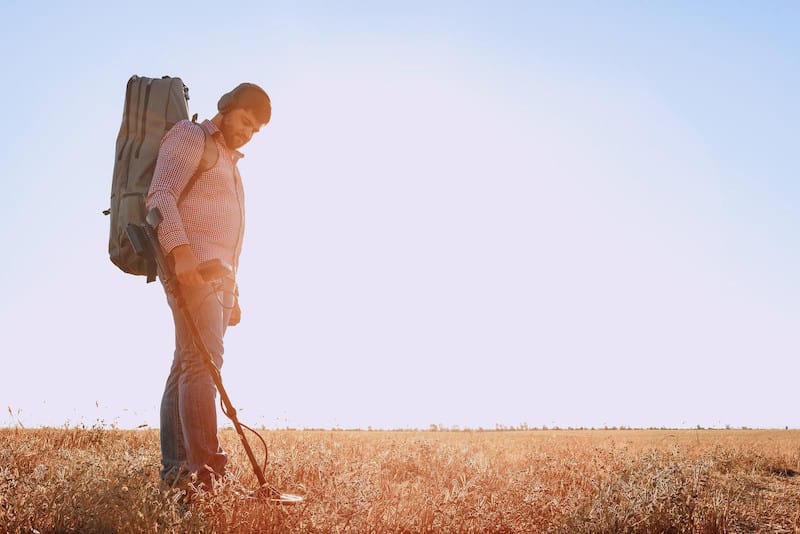
The following 3 list items, plus your smaller tools, can all be kept in your pack along with your water bottle, dry socks, your map, and food. It pays to be prepared, so keep your pack with you if you are traveling in a remote area, especially.
28) Bug Spray
I always recommend bug spray when metal detecting, especially near water in the warmer months. If you live in an area with a lot of rivers and lakes like I do, you have a lot of mosquitoes. Not only are they obnoxious, but they can also spread diseases.
Keeping bug spray with you can help keep the pests away from you so you can focus on your detecting. It drives me crazy when a mosquito or fly is buzzing in my ear or bothering with my face! Bug spray will be your best friend in these instances.
29) Sunscreen
It is always a good idea to keep sunscreen with you while metal detecting. Even if it is cloudy, you run the risk of a sunburn while outside. It doesn’t matter what time of year or what climate you live in, if you are outside for a prolonged amount of time, you should use sunscreen.
I recommend Neutrogena Ultra Dry-Touch sunscreen with an SPF of 55. This is a non-greasy sunscreen that shouldn’t irritate your skin. There are all types of sunscreen for all skin types. If you have a specific skin care need, there will be a sunscreen out there for you.
30) First Aid Kit
Especially when traveling in remote areas, it is important to bring along a first aid kit. If you are detecting in an area very near your vehicle, you should be okay to leave the first aid kit in your car or truck. I like to keep mine in my backpack regardless of where I am detecting.
I usually have my kids with me, and my youngest is incredibly accident prone. If you are in a remote area, always carry your first aid kit on your when walking around. Be sure you have safety items for the specific threats in your area.
For example, if you have a lot of poison ivy, keep a topical cream in your kit. If you live in an area with a lot of bears, keep a can of bear spray (this won’t fit in a typical first aid kit, but should be kept in or on your backpack). Be sure to customize your first aid kit to your needs.
- If you enjoyed this article, please “like” our Facebook page!
